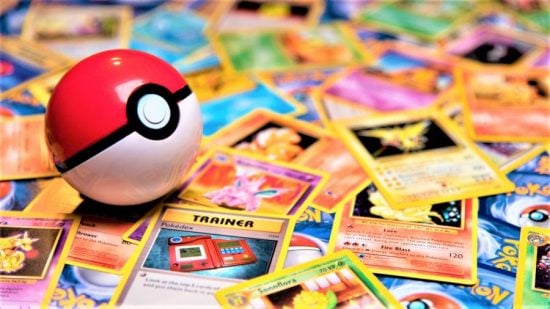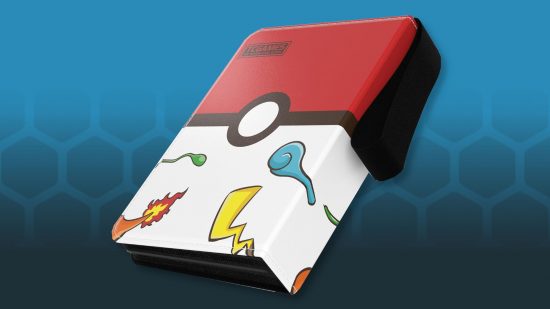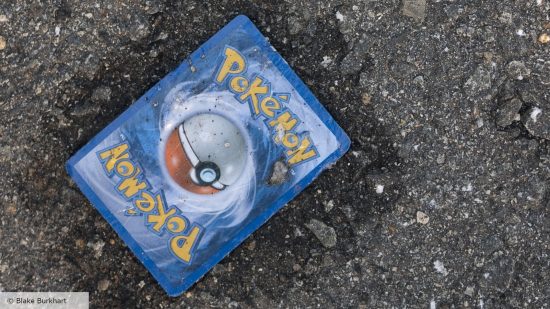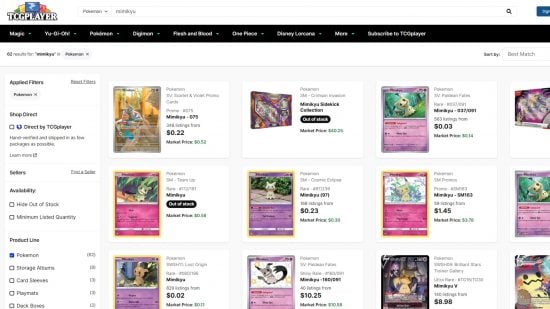So, you want to start Pokémon card collecting. Maybe you’re jumping back into the game after many years away, or maybe this is your first soiree with the trading card game. Either way, learning how to collect Pokémon cards is a big journey. We’ve put together a complete beginner’s guide to make getting started easy.
Before we get started, though, here are a few other tutorials that’ll complement your new hobby. We can teach you how to play Pokémon cards, as well as how to sell Pokémon cards that you’re ready to boot from your collection. And now, let’s focus on helping you find every Charizard Pokémon card – or whatever else you might want to collect.
Here’s how to start Pokémon card collecting:
- Why do you want to collect Pokémon cards?
- What do you need for Pokémon card collecting?
- Where to find Pokémon cards for your collection
Why do you want to collect Pokémon cards?
There are well over 10,000 Pokémon cards in the English language version of the trading card game (don’t believe us? Check out the exact number in our ‘How many Pokémon cards are there’ guide). That doesn’t even include promos or other special kinds of cards. These days, it’s basically impossible to catch ‘em all.
That means you probably need to narrow your scope when it comes to collecting Pokémon cards. And the way to do that? Figure out what you want to collect and why.
Everyone’s Pokémon collecting habits can be summed up with one of three categories:
- Collecting Pokémon cards to play
- Collecting Pokémon cards for fun
- Collecting Pokémon cards for financial value

Collecting Pokémon cards to play
Pokémon is a trading card game, so many people collect cards to turn them into decks. We have an entire guide on how to build a Pokémon deck, but here’s a quick summary.
Each deck contains 60 cards, which are a mix of Pokémon, Trainer, and Energy cards. Energy cards are used to power up Pokémon and fuel their attacks, while Pokémon Trainer cards provide extra advantages against your opponent. Each pocket monster has a Pokémon card type like Water, Bug, or Fighting. Additionally, you can ‘evolve’ your regular Pokémon cards into their more powerful evolutions during play.
For beginners, we recommend dividing the number of Energy, Trainer, and Pokémon cards in your deck roughly equally. You can have 20 of each, but many players like to tweak this number further. Try to have at least 15 of each, and feel free to experiment with the exact numbers from there.
Energy cards are cheap and easy to come by, so most of your collecting will focus on Energy and Trainer cards. You might have a specific Pokémon type you want to base your deck around, or you could choose to design a deck around the best Pokémon cards and Trainer cards you’ve found through research.
If you’re stuck for deck-building ideas or need to build some confidence, you can also buy a pre-constructed deck. Theme or Battle Decks do all the hard work for newbies – though that does take some of the fun out of collecting your own cards.
Collecting Pokémon cards for fun
Many players simply collect Pokémon for the love of the search. These fans enjoy researching, shopping, and displaying their finds – and there are few things they like more than the satisfaction of a collection that’s finally complete.
If you want to collect Pokémon cards simply to enjoy having them, here are a few ideas that might help you get started:
- Collect every card from a particular Pokémon TCG expansion
- Collect every card of your favorite Pokémon
- Collect cards with the art you think is most beautiful
- Collect promotional Pokémon cards that don’t come from sets
- Collect a particular Pokémon card in every language
Collecting Pokémon cards for financial value
There’s an elephant in the Pokémon gym that we haven’t addressed yet – Pokémon cards can get expensive. Many collectors like to hunt down the rarest of the rare Pokémon cards. Some may see this as a good investment for the future or an opportunity to make a profit from selling the cards on. Others simply take pride in knowing they own cards that are hard to get your hands on.
If you want to collect high-value Pokémon cards, there are a few things you should consider first:
Are Pokémon cards a good investment?
Some cards can be worth millions of dollars, but Pokémon is far from a get-rich-quick scheme. Modern cards are printed and preserved on a vaster scale than the original sets ever were, so the likelihood that many of them will reach the heights of Base Set Charizard looks slim. And even then, age and scarcity aren’t a guarantee of value – you can buy that Charizard card everyone chases for less than $200 on eBay.
So what gives a Pokémon card real value?
We already mentioned that scarcity is a big factor, but a card needs to be extremely rare to rack up the big bucks. We’re talking limited promo cards that were printed by the handful and given out during events or competitions. We’re talking cards that are signed by a respected artist, or scarce products with unique printing mistakes.

Even more important than scarcity is the quality of the card itself. The most expensive Pokémon cards have all been professionally graded, usually by companies like PSA or BGS. The difference between a grade 9 and a grade 10 can be tens of thousands of dollars, so a beat-up Base Set card from your attic isn’t likely to be a winning lottery ticket.
These factors do still apply to modern Pokémon cards, just on a smaller scale (look up the price of an Umbreon VMAX, for example). Few collectors manage to buy and sell the rarest cards of all time, but plenty are out there grading and flipping hard-to-find or highly desirable cards from more recent sets. You just need to set your expectations when it comes to how much money you want to make or spend.
Spotting fake Pokémon cards
You’ll also need to get really good at spotting fake Pokémon cards. With so much money changing hands, it was inevitable that fraudsters would jump on board. Head to our guide on fake Pokémon cards to learn ways to protect yourself.
What do you need for Pokémon card collecting?
Now you know what you want to find, let’s talk about what you need to start collecting:
A plan and a budget
Collecting can quickly get out of hand if you don’t set yourself a quick budget. The first aspect of this is establishing how much you want to spend on Pokémon cards each month or year.
Next, spend some time researching your collection concept. How many cards are in the set you want to complete? Can I afford to collect hundreds of Pikachu cards, or is collecting 17 Mimikyu cards a more achievable goal? What’s the most expensive card in my collection plan, and can I afford it?
Spreadsheets are your friend here. You can easily track which cards are already in your collection, as well as the value of cards you’re sourcing or storing.
Patience is also a virtue when it comes to collecting cards. Try to resist the temptation to pay more than the market value of a card just because it completes your collection faster. And be prepared to search in many different places for the exact copy you need.
Storage and protection
Whether they have sentimental value or literal, monetary value, you’ll want to keep your Pokémon cards safe. And that means investing in storage options.
Sleeves are a popular way to keep individual cards protected from wear and tear. We’d recommend double-sleeving each card from each end.
Toploaders promise even more protection, encasing your cards in hard plastic. Generally, a 35-point thickness is recommended for trading cards.
Combine them with a stand or a shelf, and these are also a great way to display your favorite cards. Bear in mind, though, that it’s extremely difficult to protect cards from fading or sun bleaching if they’re on display. Even the most expensive Toploaders struggle to keep out the sun.
Next, you’ll need a way to organize your collection. Binders are an easy way to keep cards together and search for the exact ones you need to find. Be sure to choose ones with slots big enough for sleeved cards – it’ll save you a lot of hassle.
Long-term, we’d recommend avoiding boxes as a storage option for loose cards. Cards stacked too closely together can become damaged over time, and the same goes for loose piles of cards. Beware bending!
You will also need (and we can’t stress this enough) sturdy, weatherproof storage for your cards, decks, binders, and so on. Nothing is more devastating than losing your entire collection to damp, flooding, or some other unforeseen disaster. Always place this final container in a cool, dry place, and use acid-free boxes if you plan to use cardboard containers.
Where to find Pokémon cards for your collection
Finally, let’s talk about where you’ll get your Pokémon cards. Your collection has three possible sources:
Buying sealed products
Whether it’s individual booster packs or big Pokémon booster boxes, sealed products offer you a random selection of cards. Some love the thrill of cracking a pack, while others resent the amount of unwanted cards that they end up with.
Opening sealed products adds a new layer of fun you won’t get from buying the exact card you want, but it can end up being more expensive overall – the cost of all those duds adds up. If you’re collecting modern Pokémon cards and like a bit of a gamble, this might be the method for you.
Buying singles
Online marketplaces like TCGPlayer and local, in-person game stores sell individual Pokémon cards for their average market value. If you’re after a specific card or one that can’t be found in currently available sealed products, this is the best option for collecting.
Buying singles takes a bit more research, and you’d better be prepared to shop around if you want to get the best prices. But it’s definitely the most efficient way to build a Pokémon collection.
Trading
We may not be playing trading card games in the playground any more, but plenty of people still like to trade Pokémon. If an exchange sounds like your idea of fun, we’d recommend doing so on a local level.
Start attending local game store events, join local social media groups, and maybe try a TCG convention or two. The key here is to build relationships with other committed players who are more likely to engage in a trade.
For more rarities, here’s all you need to know about first edition Pokémon cards. We can also point you to the most powerful Pokémon cards for your TCG deck.







